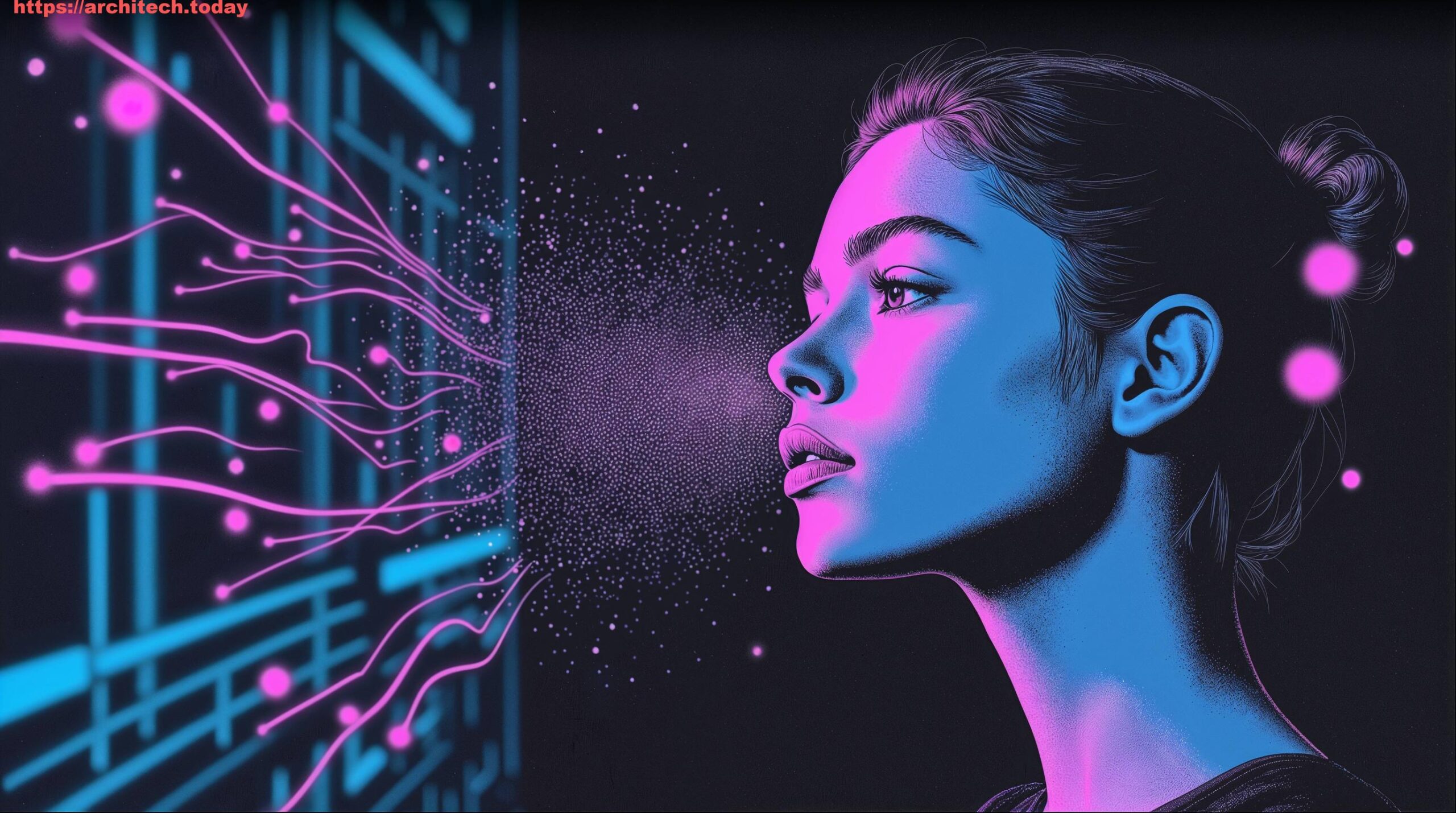Ever wished you had a coding buddy who knew the entire open-source universe by heart, suggesting the perfect function or sniffing out a subtle bug before it even compiled? Now, you do. The world of software development is undergoing a profound transformation, propelled by the integration of artificial intelligence directly into our Integrated Development Environments (IDEs).
Once, coding was largely a solitary pursuit, or at best, a collaborative dance with another human pair programmer. Today, that dance includes an intelligent partner – your AI coding assistant. Tools like GitHub Copilot, Amazon CodeWhisperer, and others are no longer futuristic fantasies but present-day realities, actively suggesting lines of code, completing functions, generating boilerplates, and even looking up documentation on the fly. This isn’t just an evolution; it’s a paradigm shift, moving us from purely human-to-human collaboration to a powerful human-machine synergy.
For software developers, this means a significant boost in productivity and a reduction in the mundane aspects of coding. For team leads and CTOs, it heralds faster project delivery, potentially higher code quality, and a more engaged development team. But like any powerful tool, AI in coding comes with its nuances. This article will delve into the exciting emergence of AI pair programming, dissect its tangible benefits, explore real-world applications, confront the inherent challenges, and provide actionable best practices. We’ll also offer a strategic perspective for leaders on how to effectively integrate these intelligent assistants into their workflows. Prepare to discover how AI is not just changing *how* we code, but redefining the very essence of what it means to be a programmer in the 21st century.
Context & The Emergence of AI Pair Programming
To truly appreciate the impact of AI pair programming, we first need to understand what these intelligent assistants are and how they function. At their core, AI pair programming assistants are sophisticated machine learning models trained on vast datasets of public code. This training enables them to understand context, identify patterns, and generate relevant code suggestions in real-time within your IDE. Think of them as hyper-efficient, digital coding companions who have read a significant portion of the world’s open-source code and are always ready to offer a helping hand.
These tools typically fall into several key categories:
- Code Completion: Perhaps the most common and widely adopted feature, AI assistants can predict and suggest the next few lines of code, variable names, or function calls based on the current context and common coding patterns. This goes far beyond traditional IDE autocomplete, often suggesting entire logical blocks.
- Code Generation: Beyond completion, AI can generate larger chunks of code, such as entire functions, classes, data model structures, or API handlers, given a clear natural language prompt or existing code context. Imagine simply commenting out what you want a function to do, and watching the AI draft a starting point for you.
- Suggestions & Refinements: These assistants can offer alternative, more optimized, or more idiomatic ways to write existing code. They might point out potential vulnerabilities, suggest performance improvements, or even help refactor smaller code segments.
- Documentation Lookups & Explanations: Some advanced tools can retrieve relevant documentation snippets, explain complex functions, or link to official standards, acting as an instant knowledge base right within your coding environment.
The concept of pair programming – two developers working side-by-side at one workstation, collaboratively writing, reviewing, and testing code – has been a cornerstone of agile methodologies for decades. It fosters knowledge sharing, reduces errors, and improves code quality. The emergence of AI pair programming doesn’t replace this human element but rather augments it. It builds upon the established principles of collaborative coding, extending the “pair” to include an artificial intelligence that brings unparalleled speed and access to an almost infinite knowledge base. It’s a natural evolution, taking the best of human collaboration and injecting it with the power of intelligent automation.
This integration marks a pivotal moment. We’re no longer just using tools to automate compilation or deployment; we’re leveraging AI to actively participate in the creative and problem-solving process of writing code itself. This shift requires developers to adapt, to learn how to effectively collaborate with their new AI partners, and to understand the immense value they can bring when wielded correctly.
Benefits & Value Proposition: Why AI Is Your New Best Coding Friend
The allure of AI pair programming assistants isn’t just novelty; it’s rooted in tangible benefits that can dramatically reshape daily development workflows and business outcomes. From individual developers to large enterprise teams, the value proposition is compelling.
Faster Coding: Beyond Just Autocomplete
One of the most immediate and appreciated benefits is the sheer speed increase. AI tools go far beyond the basic autocomplete features we’ve grown accustomed to. They can anticipate entire routine code patterns, fill in boilerplate, and even generate complex structures with minimal input. Imagine you’re building a new API endpoint. Instead of manually typing out the data model classes, validation logic, and basic CRUD operations, your AI assistant can scaffold much of this for you after a simple comment or by recognizing the context. A developer might type // create a user model with name, email, and password, and the AI springs to life, generating the class definition:
class User(BaseModel):
name: str
email: EmailStr
password: str = Field(min_length=8)This frees developers from tedious, repetitive tasks, allowing them to channel their energy into the unique business logic that truly differentiates their application. Minutes saved on boilerplate add up to hours, even days, over a project lifecycle, directly impacting delivery timelines and project velocity. This efficiency translates directly into faster sprint cycles and quicker time-to-market for new features, a critical advantage for any organization.
Reduced Bugs: Smarter, Safer Code
Nobody likes bugs. They’re time-consuming, frustrating, and costly. AI pair programmers can act as an invaluable first line of defense against common coding errors. Trained on vast repositories of high-quality code, these assistants often suggest tested, idiomatic patterns and best practices. If a developer starts to write a loop or handle a common edge case, the AI might suggest a more robust or efficient approach that avoids common pitfalls. For example, when iterating over a list while needing to modify it, an AI might implicitly guide a developer towards iterating over a copy or using a more functional approach to prevent common IndexError or unexpected behavior.
Consider a scenario where a developer is about to implement a common search algorithm. The AI might suggest using a built-in optimized function or a well-known library implementation instead of a custom, potentially less efficient, or bug-prone version. This proactive guidance helps prevent bugs before they even enter the codebase, reducing the need for extensive debugging cycles and improving the overall quality and reliability of the software. It’s like having a senior engineer continuously reviewing your shoulder, offering subtle nudges towards perfection.
Learning Opportunities: Your On-Demand Coding Tutor
Beyond speeding up coding and reducing errors, AI assistants serve as incredible learning tools. For junior developers, they can demystify complex APIs by suggesting correct usage or providing explanations. For seasoned professionals, they can introduce new patterns, optimized algorithms, or less-known library functions. Imagine you’re working with a new framework or an unfamiliar library. As you start typing, the AI provides contextual suggestions, effectively showcasing the correct way to interact with that API. It can act as an inline teacher, demonstrating best practices in real-time. For example, if you’re working with Python’s collections module and start typing defaultdict, the AI might instantly show you how to initialize and use it effectively, including common patterns.
from collections import defaultdict
# AI suggests this pattern:
# my_dict = defaultdict(list)
# my_dict['key'].append(value)This instant feedback and exposure to optimized approaches can accelerate a developer’s learning curve, enabling them to absorb new information and improve their coding skills much faster than traditional methods of searching documentation or asking colleagues. It fosters a continuous learning environment, making every coding session an opportunity for skill enhancement.
Real-World Examples: AI in Action
Theory is one thing; practical application is where the true power of AI pair programming becomes evident. Let’s explore some common scenarios where these intelligent assistants shine, illustrating how they integrate seamlessly into a developer’s workflow.
Optimizing Algorithms on the Fly
Consider a developer tasked with implementing a data processing function that involves sorting and filtering a large list of objects. They might start writing a naive approach, perhaps a series of loops and conditional statements. As they type, an AI assistant, having been trained on countless optimized algorithms, could recognize the pattern and suggest a more efficient alternative. For instance, if the developer begins writing a manual bubble sort, the AI might pop up with a suggestion to use Python’s built-in sorted() function with a custom key or even propose a more complex algorithm like merge sort if the data characteristics warrant it. This isn’t just about convenience; it’s about leveraging collective intelligence to improve performance without requiring the developer to stop their flow and conduct a separate research session.
Instant Boilerplate Generation
One of the most tedious aspects of development, especially in established frameworks, is writing boilerplate code. Think about setting up a new REST API endpoint. It often involves defining a request schema, a response schema, routing logic, and basic validation. A developer can type a descriptive comment, such as // Create a FastAPI endpoint to register a new user with username and password, and watch as the AI generates the foundational structure:
from fastapi import APIRouter, HTTPException, status
from pydantic import BaseModel
router = APIRouter()
class UserRegister(BaseModel):
username: str
password: str
@router.post("/register", response_model=UserRegister, status_code=status.HTTP_201_CREATED)
async def register_user(user: UserRegister):
# TODO: Add actual user registration logic (e.g., hash password, save to DB)
return userThis instant scaffolding saves significant time, allowing the developer to immediately jump into implementing the core business logic rather than spending cycles on repetitive setup. It’s not just about speed; it’s about maintaining focus on the most impactful parts of the codebase.
Contextual Documentation and Standards Adherence
How often do developers interrupt their flow to search for a specific function signature, understand an error code, or recall a particular syntax? AI assistants can minimize these interruptions. If a developer types in a function name from a library they use infrequently, the AI can instantly provide its signature, docstring, or even link to the official documentation page. Beyond simple lookups, some AI tools can be configured to understand a team’s internal coding standards or style guides. If a developer writes code that deviates from these standards (e.g., incorrect naming conventions or a non-compliant logging pattern), the AI might gently suggest an adjustment, helping to maintain code consistency across the team and project. This constant, gentle guidance helps ensure code quality and adherence to established practices without needing a manual review for every single line written. It’s like having a linter, a style guide, and a knowledge base all rolled into one highly responsive partner.
Challenges & Caveats: The Human Touch Remains Essential
While the benefits of AI pair programming are compelling, it’s crucial to approach these tools with a balanced perspective. They are powerful assistants, but they are not infallible. Recognizing their limitations and potential pitfalls is key to leveraging them effectively and responsibly.
Inaccuracies, Inefficiencies, and Insecure Code
AI models, despite their sophistication, can sometimes produce suggestions that are incorrect, inefficient, or even insecure. Since these models learn from vast datasets, they can sometimes perpetuate common errors or anti-patterns found in that data. A developer might receive a suggestion that looks syntactically correct but introduces a subtle logical bug or a performance bottleneck. More critically, there’s a risk of generating insecure code. If the training data contains vulnerable patterns, the AI might inadvertently suggest them. For instance, an AI might suggest a SQL query construction method that is susceptible to injection attacks, or a password hashing approach that is outdated and weak. This highlights the absolute necessity for human oversight: the mantra here is “trust but verify.” Relying blindly on AI suggestions can introduce significant technical debt and security risks into a project.
Maintaining Team Standards and Code Quality
Every development team has its unique coding standards, style guides, and architectural patterns. While some AI tools can be fine-tuned to project-specific contexts, their default suggestions might not always align perfectly with a team’s established practices. This can lead to a fragmented codebase where some parts follow AI-generated patterns and others adhere to human-defined standards, complicating maintenance and review processes. Imagine an AI generating code with a different naming convention for variables, or using a distinct approach to error handling than what your team has standardized. Such inconsistencies, while seemingly minor, can accumulate and degrade the overall quality and readability of the codebase over time. Integrating AI effectively requires a conscious effort to align its outputs with team expectations, potentially through customization or rigorous review.
The Need for Human Oversight and Anecdotes of Revision
The “trust but verify” principle is paramount. AI excels at pattern recognition and rapid generation, but it lacks genuine understanding, critical thinking, or awareness of nuanced project requirements. A developer recently shared an anecdote: an AI suggestion for a complex data transformation initially seemed brilliant, cutting down several lines of code into a concise, elegant expression. However, upon closer inspection and testing, it failed to account for a specific edge case tied to historical data, leading to incorrect calculations for a small but critical subset of records. The developer had to step back, understand the AI’s proposed logic, identify the missing context, and then revise the code to correctly handle the edge case. This experience underscores that while AI can offer powerful starting points or optimization ideas, the ultimate responsibility for correctness, security, and adherence to project-specific logic rests with the human developer. Would you trust your AI to refactor your most critical production function without a thorough human review? Probably not, and for good reason.
Best Practices for Using AI Assistants: Harnessing the Power Responsibly
To truly unlock the potential of AI pair programming while mitigating its risks, developers, team leads, and CTOs must adopt a strategic and disciplined approach. Integrating these tools effectively is less about technology adoption and more about process refinement and skill development.
Always Review AI-Generated Code Before Merging
This is arguably the most critical best practice. Treat AI-generated code as a suggestion, not a definitive solution. Every line of code proposed by an AI assistant must undergo the same rigorous review process as human-written code – or perhaps even more so. This means carefully checking for correctness, performance, security vulnerabilities, and logical flaws. Just as you wouldn’t merge a pull request from a junior developer without a thorough review, the same applies to your AI buddy. Think of the AI as a highly productive but sometimes overly confident junior developer. Your role as the senior partner is to ensure quality and reliability.
Align AI Outputs to Team Coding Standards and Style Guides
To prevent codebase fragmentation and maintain consistency, actively work to align AI outputs with your team’s established coding standards. Some AI tools offer configuration options to adhere to specific style guides (e.g., PEP 8 for Python, ESLint rules for JavaScript). Where direct configuration isn’t possible, developers should consciously edit AI suggestions to match team conventions. This might involve adjusting variable names, refactoring structures, or ensuring specific error handling patterns are followed. Consistency is key for long-term maintainability, and it’s the human developer’s responsibility to enforce it, even when collaborating with an AI.
Use AI for Idea Generation, Not Sole Implementation for Critical Code
AI excels at generating ideas, exploring different approaches, and quickly providing boilerplate. For critical sections of code – core business logic, security-sensitive components, or high-performance algorithms – use the AI as a powerful brainstorming partner rather than a sole implementer. Let it suggest various ways to solve a problem, then leverage your human expertise to choose the best approach, refine it, and write the final, thoroughly vetted implementation. This hybrid approach combines the AI’s speed and breadth of knowledge with human precision, understanding, and accountability. It’s about augmenting your creativity and problem-solving, not outsourcing it entirely.
Regularly Update and Configure AI Tools
The field of AI is evolving at an incredible pace, and so are these coding assistants. Ensure your AI tools are regularly updated to benefit from the latest models, bug fixes, and feature enhancements. Furthermore, invest time in configuring them to match your project context. This might involve feeding them examples of your codebase, adjusting their sensitivity to suggestions, or integrating them with your specific tech stack. A well-configured AI assistant is far more effective and less intrusive than a generic one. Tailoring the tool to your environment maximizes its utility and minimizes irrelevant or unhelpful suggestions.
Keep Security and Reliability Checks in Place
AI-generated code doesn’t get a pass on security or reliability testing. Your existing static analysis tools, code scanners, unit tests, integration tests, and manual security reviews remain just as important, if not more so. Treat AI as another source of code that needs scrutiny. Educate your team on the potential for AI to introduce vulnerabilities and reinforce the importance of security best practices regardless of who (or what) wrote the code. Reliability also extends to performance and stability; AI suggestions should be profiled and tested to ensure they don’t introduce regressions or bottlenecks. It’s a layer to your development process, not a replacement for fundamental quality assurance.
Strategic Perspective for Team Leads & CTOs: Leading the AI Revolution
For engineering leaders – team leads, engineering managers, and CTOs – the emergence of AI pair programming isn’t just about new tools for developers; it represents a strategic inflection point that can impact productivity, talent acquisition, and overall business agility. Adopting AI effectively requires more than just enabling a plugin; it demands a thoughtful strategy.
Connecting Developer Happiness with Business Outcomes
One of the most immediate and impactful benefits for leaders is the direct correlation between developer happiness and business outcomes. AI assistants excel at automating grunt work: boilerplate code, repetitive patterns, basic syntax. By offloading these tedious tasks to AI, developers are freed up to focus on more complex, creative, and intellectually stimulating problems – the core business logic, innovative features, and architectural challenges that truly drive value. This reduction in mundane work leads to higher job satisfaction, decreased burnout, and greater engagement. Happy developers are productive developers, and productive developers deliver faster. This translates directly into quicker project completion, accelerated feature delivery, and potentially higher quality software, all of which directly impact the bottom line and market competitiveness. It’s a clear win-win: improved developer experience fuels superior business performance.
Integration into Workflows and CI/CD Pipelines
Strategic integration of AI coding tools goes beyond individual developer adoption. Leaders should explore how these tools can be woven into broader development workflows and Continuous Integration/Continuous Delivery (CI/CD) pipelines. This might involve standardizing specific AI tools across teams, developing internal guidelines for their use, or even incorporating AI-powered code analysis into automated checks. For instance, while a developer uses AI for suggestions, a subsequent CI/CD step could include an AI-driven linter or security scanner that specifically checks for common AI-generated pitfalls. This ensures that the benefits of speed are not offset by a decline in quality or security, creating a robust, intelligent development ecosystem. The goal is to create a seamless experience where AI enhances every stage of the development lifecycle, from initial coding to deployment, without introducing new friction.
Training, Onboarding, and Skill Amplification
The introduction of AI coding assistants fundamentally changes the onboarding process for new developers and the continuous learning trajectory for existing team members. Leaders should proactively address training considerations. For new hires, AI guidance can significantly accelerate their ramp-up time, allowing them to become productive contributors faster by suggesting contextually relevant code and best practices. Imagine a new developer joining a complex legacy codebase; an AI assistant could help them navigate unfamiliar patterns and quickly understand the idiomatic way to extend existing features. For the entire team, training should focus not just on *how* to use the tools, but *how to effectively collaborate* with AI – when to trust its suggestions, when to override them, and how to critically review generated code. This shift isn’t about replacing skills, but amplifying them. Leaders must foster a culture where developers see AI as a powerful extension of their capabilities, empowering them to tackle more ambitious problems and grow their expertise in higher-level design and critical thinking, rather than getting bogged down in syntax and boilerplate.
Empowerment, Not Replacement
The journey with AI in coding, particularly with intelligent pair programming assistants, is not just another technological fad; it’s a fundamental shift in how we conceive and execute software development. These tools are transforming the coding phase from a solitary act into a dynamic, human-machine collaboration, offering unprecedented gains in speed, efficiency, and even learning.
We’ve seen how AI can dramatically accelerate coding by handling boilerplate, reduce bugs by suggesting tested patterns, and serve as an always-on tutor, explaining complex functions or proposing optimized approaches. Yet, we’ve also confronted the crucial caveats: the potential for inaccuracies, the challenge of maintaining team standards, and the non-negotiable need for human oversight and critical review. For leaders, this translates into strategic opportunities for boosting developer morale, accelerating delivery, and enhancing overall software quality through thoughtful integration and training.
Ultimately, AI assistants are not here to replace developers. Instead, they are powerful skill amplifiers, analogous to the transformative impact of high-level programming languages over assembly, or the efficiency gains brought by modern frameworks. They free us from the mundane, allowing us to elevate our focus to the more complex, creative, and critical aspects of problem-solving and system design. They empower us to achieve more, faster, and potentially with greater precision.
The invitation now is for every developer, team lead, and CTO to embrace this evolution. Experiment with the available tools, integrate them into your personal and team workflows, and discover how this evolving partnership can enhance your productivity and code quality. The future of coding is collaborative, and your intelligent pair programmer is ready. How will you leverage this new partnership to build the next generation of software?









